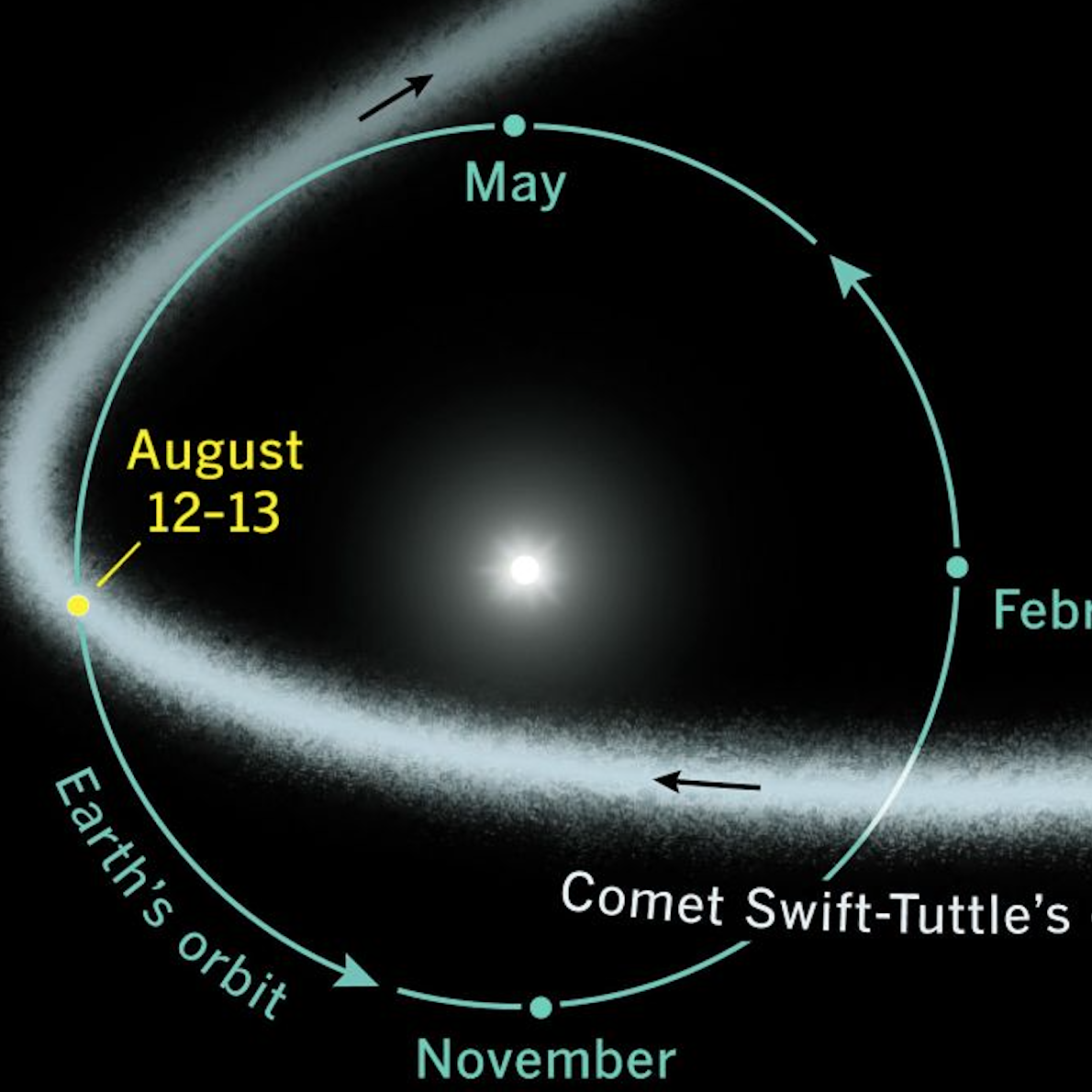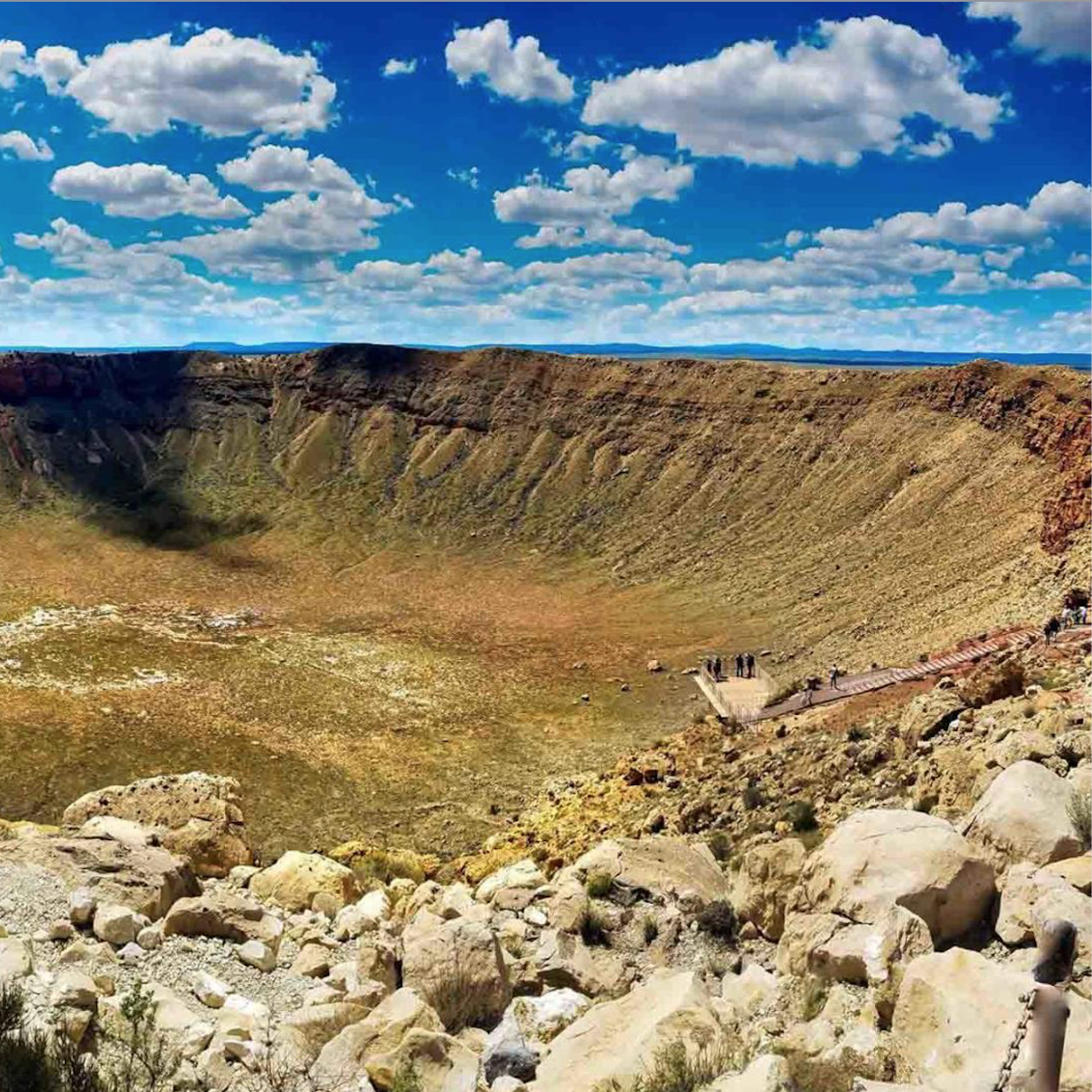Watch Tonight and Tomorrow for Draconid Meteor Shower
Image Courtesy NASA/George Varros / Public domain
Watch for the Draconids this week!
How To Become a Meteorite
Ever wonder what a Meteorite actually is? Or, the difference between Meteoroid, Meteor, and Meteorite? NASA has a whole page dedicated to this topic. As it turns out, only “space rocks” which make it all the way to earth are called Meteorites! According to NASA, Meteoriods are the dust and rocks in space, and they only become Meteors when they streak across our atmosphere, and only when they land, can they be called Meteorites!
Introducing 2020 Barringer Medal Recipient: Joanna Morgan
Joanna Morgan is a Professor of Geophysics at Imperial College London
Joanna received the Barringer award for her work on the Chicxulub impact crater. She first heard about Chicxulub in the mid 1990s when scientists were arguing about its size and morphology, and whether it was the site of the K-T impact.
More about Chicxulub Impact Crater
This shaded relief (public domain) image of Mexico's Yucatán Peninsula shows a subtle, but unmistakable, indication of the Chicxulub impact crater. Most scientists now agree that this impact was the cause of the Cretatious-Tertiary Extinction, the event 65 million years ago that marked the sudden extinction of the dinosaurs as well as the majority of life then on Earth.
Inside Ramgarh (Meteorite) Crater there is a 10th Century Shiva Temple
Thanks to Soddjartj Raipriye’s research project grant we will soon learn more about the formation of Ramgarh Crater in Rajasthan, India.
At the center of this 4 km wide meteorite crater there is the 10th century Bhand Deva Temple, built on the edge of a pond. Quite a “celestial” site for such a beautiful temple. Learn more here.
Introducing Barringer Family Fund Research Grant Recipient: Catherine Ross
Catherine Ross’ project: Testing the Reliability of Zircon (U-Th)/He Impact Crater Thermochronometry its to determine several factors which affect Zircon for the sake of determining of dates of impacts more reliably.
Introducing Barringer Family Fund Research Grant Recipient: Stamatios Xydous
Stamatios Xydous’ project: Chemical and spectroscopic characterization of shock metamorphism features in a suite of shocked ordinary chondrite meteorites with implications on the dynamic of impacts among asteroids aims to explore how the meteorites were affected after formation.
Introducing Barringer Family Fund Research Grant Recipient: Raiza R. Quintero
Raiza Quintero’s research project- The Ilkurlka magnetic ring anomaly: a new Australian impact structure? - is also much like our founder, D.M. Barringer’s pursuit, to determine and confirm the buried Ilkurlka structure in Australia is an impact structure!
Introducing Barringer Family Fund Research Grant Recipient: Soddjartj Raipriye
Each year, the Barringer Family Fund awards a small number of competitive grants, in collaboration with the Lunar and Planetary Institute, to support MA, PhD, and postdoctoral students as they carry out field research at known and suspected impact sites around the world.
Introducing Barringer Family Fund Research Grant Recipient: Morgan Cox
Each year, the Barringer Family Fund awards a small number of competitive grants, in collaboration with the Lunar and Planetary Institute, to support MA, PhD, and postdoctoral students as they carry out field research at known and suspected impact sites around the world. The 2020 grants have been awarded to 6 recipients, their projects are posted on the site in RESEARCH.
Introducing Barringer Family Fund Research Grant Recipient: Tiolo Aurélien Temenou
Each year, the Barringer Family Fund awards a small number of competitive grants, in collaboration with the Lunar and Planetary Institute, to support MA, PhD, and postdoctoral students as they carry out field research at known and suspected impact sites around the world. The 2020 grants have been awarded to 6 recipients, their projects are posted on the site in RESEARCH.
Why We Don't See So Many Meteorite Impact Craters on Earth...
Looking at the moon, and knowing there are constant meteor showers, have you ever wondered why Earth is not similarly covered in impact craters? Can you guess?
There are several reasons, including the obvious ones, but not all are obvious, discussed by Alan Hale writing for RocketStem.org in this article. Its always a pleasure to see Barringer Meteorite Crater used as a prime example amongst many of meteor impacts on our planet!
Backyard Meteorite? This one was recently confirmed in Germany
Wouldn’t you love to discover a meteorite…. in your own backyard? Sounds infinitely unlikely but is actually more common than you would expect. This 66 lb beauty was discovered many years earlier in this German family’s backyard, and only recently confirmed by the Meteoritical Society.
Catch Sight of Comet Neowise Before it Fades
Its not too late to catch sight of the comet Neowise before it begins to fade soon- visible with the naked eye! Especially away from city lights, look to the North West soon after sunset and let your eyes acclimate to the dark. Find out more from Matthew Cappucci’s Washington Post article, Read More
Middle School Teachers: Updated Virtual Meteoritics Curriculum for Free!
Welcome Teachers! We’ve gone VIRTUAL!!! Every lesson is perfect for Zoom or your school’s computer lab. Your students will become experts at observing, identifying, and analyzing impact craters and will learn the scientific history to impact crater discovery.
Catch the next Meteor Shower! Here's a handy Guide:
The American Meteor Society has created a helpful calendar for us star gazers and Meteor Shower enthusiasts! This chart is up to date starting with what’s currently viewable and from where.
Amazing what we see and can know about Mars!
This movie, based on images taken by ESA’s Mars Express, showcases the 82 km wide Korolev crater on Mars.
Planning a Summer Trip? Winslow’s Meteor Crater impresses the world!
Named one of the Seven Wonders of the World 2020 by Conde Nast Traveler, Winslow’s Meteor Crater is awe inspiring.




















